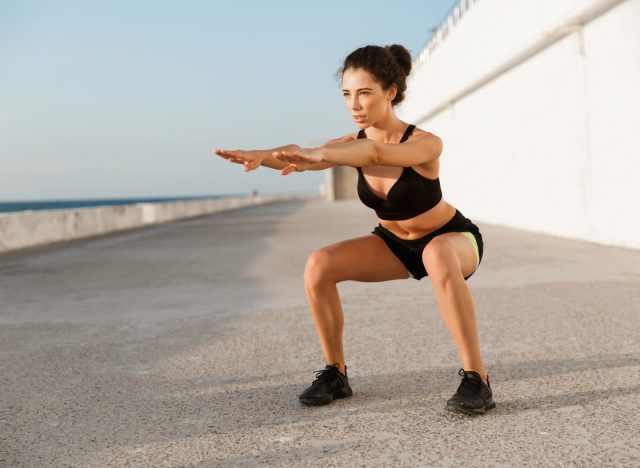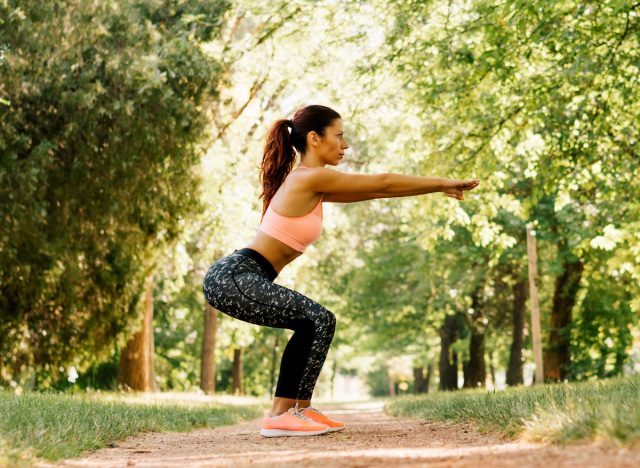How many squats can you crank out in a minute? While you may not find yourself in a workout requiring 60 seconds of nonstop squats, this challenge isn’t just a random fitness test. It’s a simple yet powerful way to measure your fitness level, muscular endurance, and squat strength. Whether you’re an avid gym-goer or looking to assess your overall health, the number of squats you can complete in 60 seconds says a lot about your lower body strength, stamina, and mobility.
So, what’s the magic number to be considered “in great shape”? It all depends on your baseline fitness level and how efficiently you can tap into strength and endurance. In this article, we’ll explain why squats are a fantastic fitness benchmark, how many you should aim for in a minute, and how to improve your squat endurance to dominate this challenge.
In This Article
Why Squats Are the Ultimate Test of Fitness


Squats are a key foundation of functional fitness and a true measure of strength, mobility, and endurance. This compound movement engages major muscles like the quads, hamstrings, glutes, and core while activating stabilizers in the hips and ankles.
A proper squat requires balance, flexibility, and power, making it a reliable benchmark for overall fitness. It challenges not only your strength but also your ability to maintain form under fatigue, testing how well your muscles and cardiovascular system work together. Your ability to tie these variables into one squat package truly shows how efficient and developed your movement is.
Beyond the gym, squats mimic real-life movements like sitting, lifting, and climbing, making them essential for daily function and athletic performance. So it makes sense that any gym goer would want to strive for a strong squat. They’re also highly versatile. Whether you’re performing bodyweight squats, goblet squats, or barbell back squats, they can be scaled to match your fitness level and goals. This adaptability makes squats a universal tool for assessing and improving strength, mobility, and endurance.
How Many Squats You Should Aim for in 60 Seconds


Let’s talk numbers. The number of squats you can perform in 60 seconds depends on your fitness level, form, and endurance. Here’s a quick breakdown:
- Beginner: If you can knock out 15–25 squats in a minute, you’re on the right track for building a solid foundation.
- Intermediate: Completing 30–40 squats in a minute means you have good lower-body strength and endurance.
- Advanced: Hitting 45+ squats in a minute places you in elite territory, showcasing exceptional strength, stamina, and mobility.
Keep in mind that quality matters more than quantity. A sloppy squat with improper form won’t do you any favors. Focus on depth, stability, and control to truly measure your fitness level.
How To Build Squat Endurance for Better Performance


If you want to crush your 60-second squat challenge, building muscular endurance is key. Start with these practical tips:
- High-Rep Bodyweight Squats: Perform sets of 20–30 bodyweight squats with minimal rest to increase your stamina.
- Wall Sits: Hold a wall sit for 30–60 seconds to strengthen your quads and improve your ability to endure fatigue.
- Tempo Training: Slow down your squats to a 3–5 second descent, then explode back up. This builds control and strength endurance.
- Circuit Workouts: Incorporate squats into cardio-focused circuits, alternating between squats and exercises like jump rope or push-ups to condition your body for high-rep efforts.
- Progressive Overload: Gradually increase your rep count or resistance (e.g., by holding a light dumbbell) to challenge your muscles and improve endurance over time.
- Training Variation: Use a mix of squat variations to target strength, power, and endurance. Goblet squats, Bulgarian split squats, and jump squats all offer unique benefits. Don’t skip lunges—they engage the same muscle groups while improving balance, stability, and unilateral strength, directly enhancing your squat performance.
Recovery is just as important as training. Prioritize stretching, mobility work, and rest to keep your muscles fresh and ready to perform. With consistent effort, you’ll see your squat numbers soar—and so will your fitness level.









